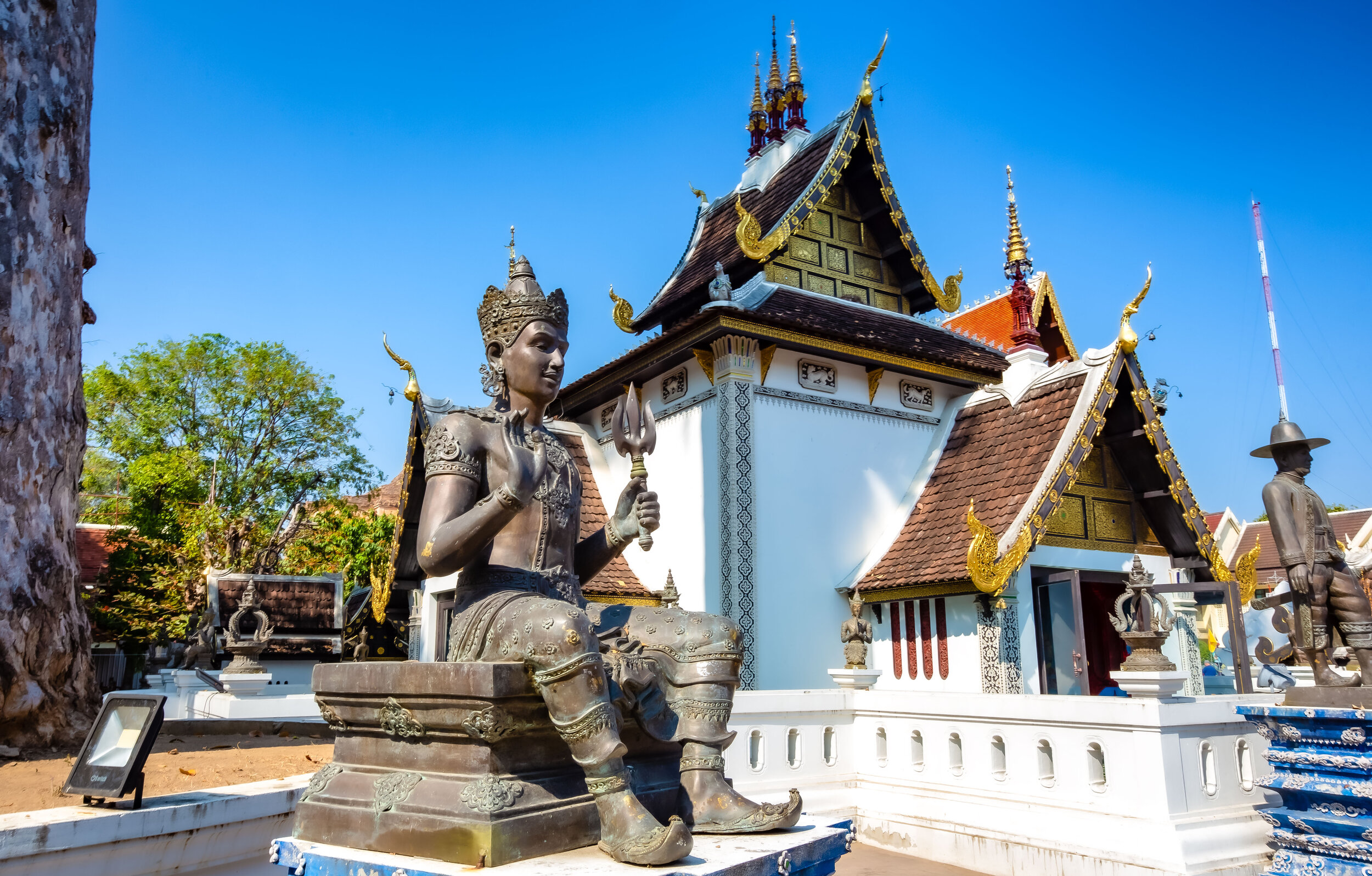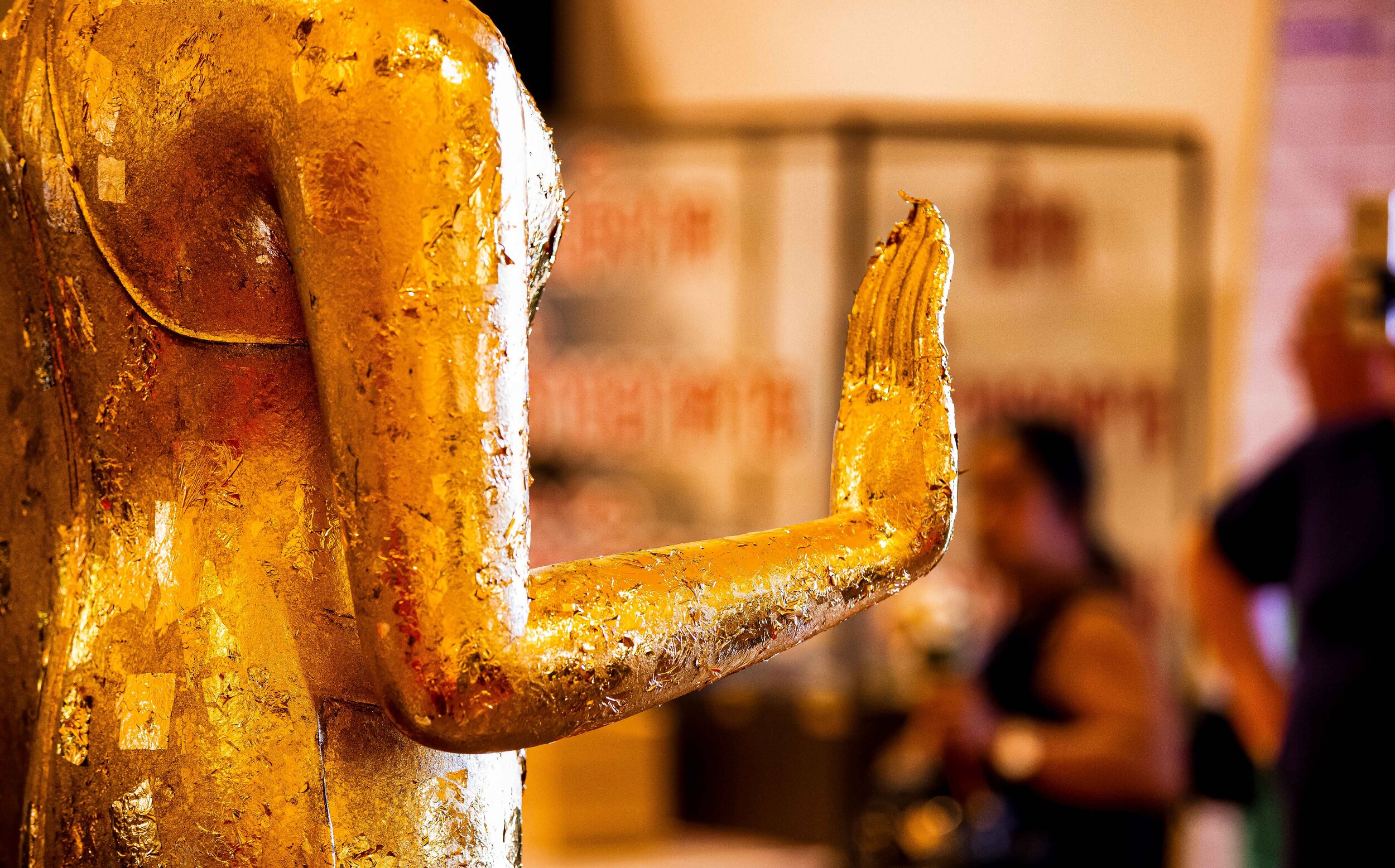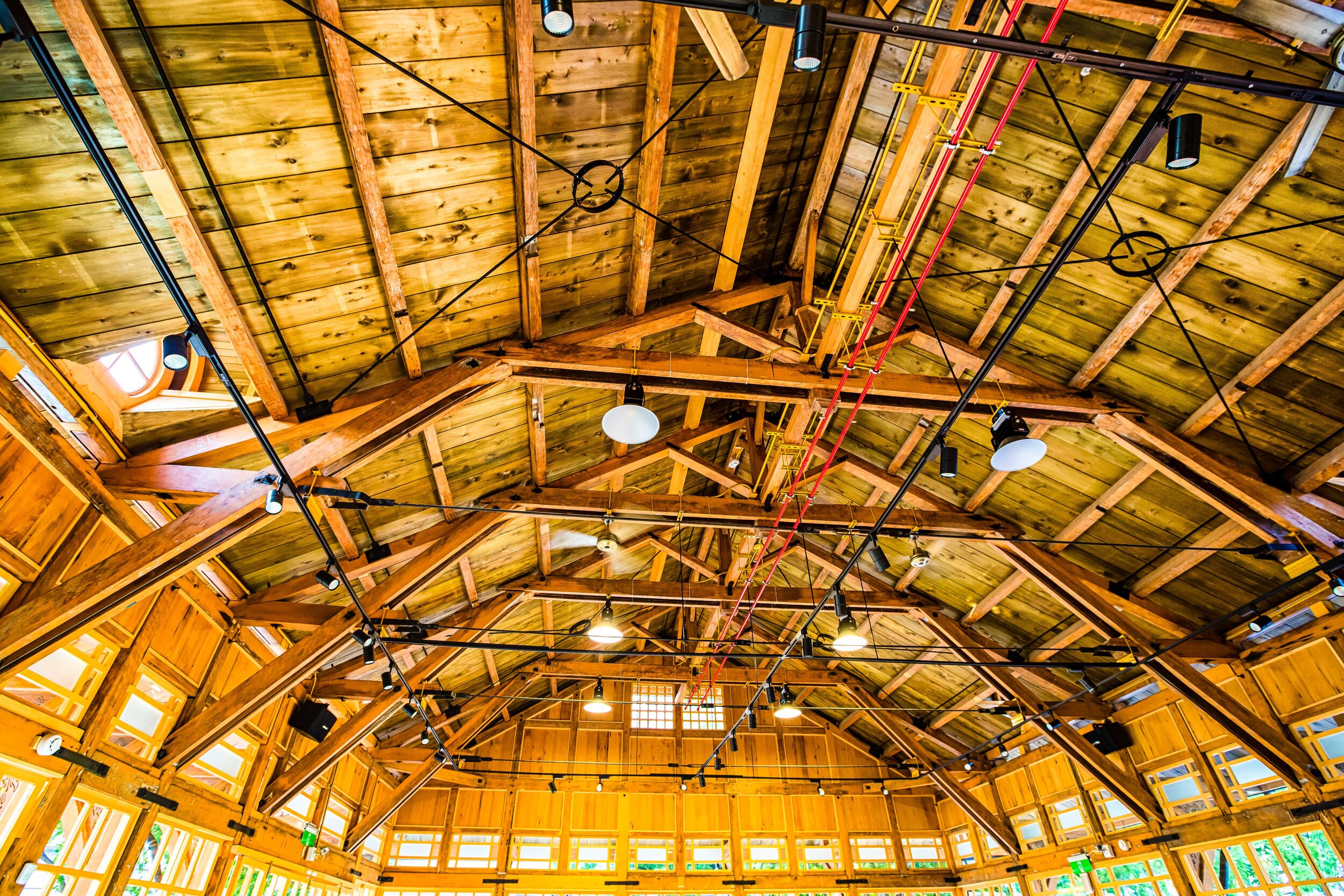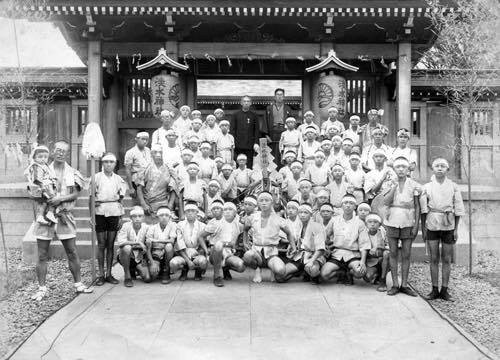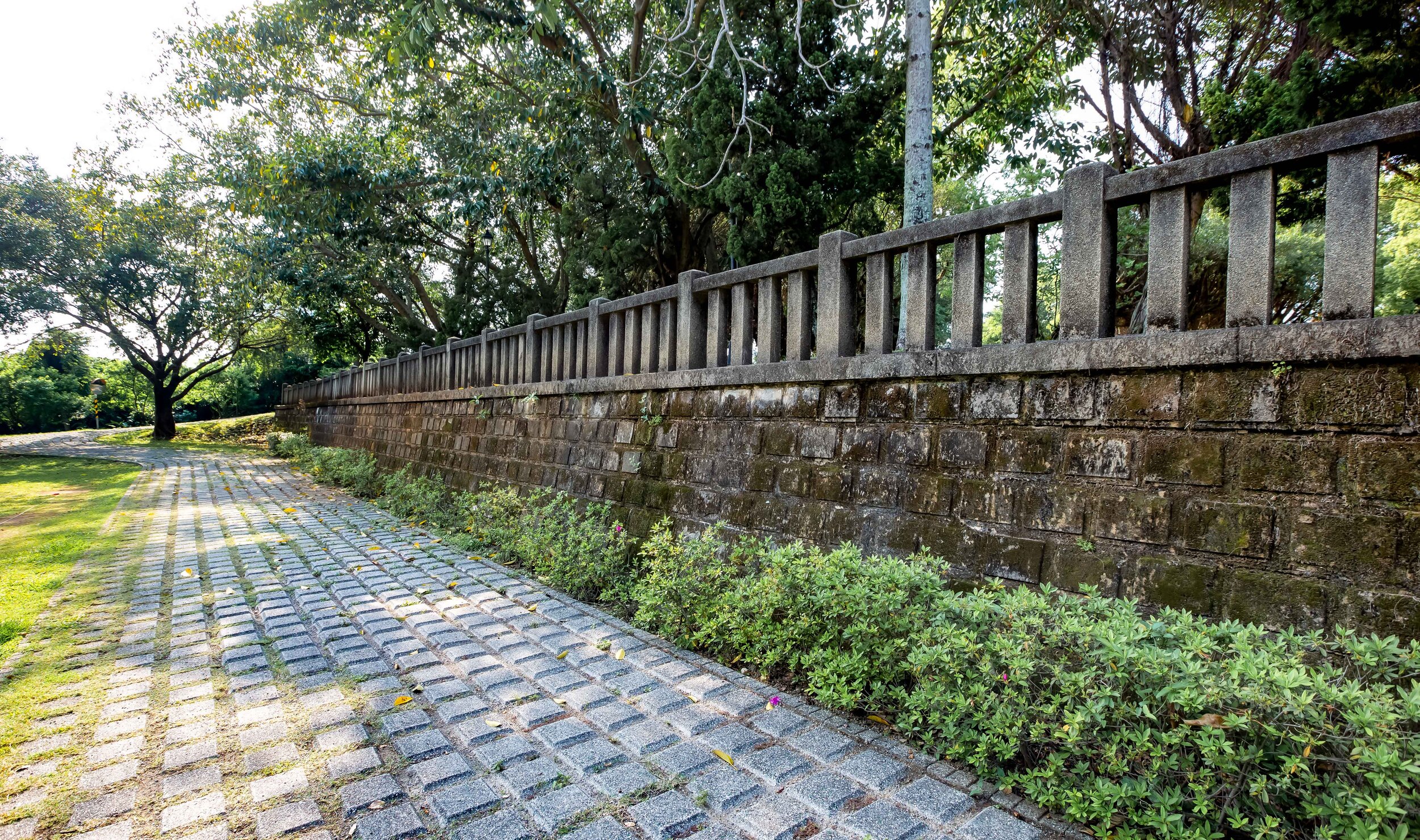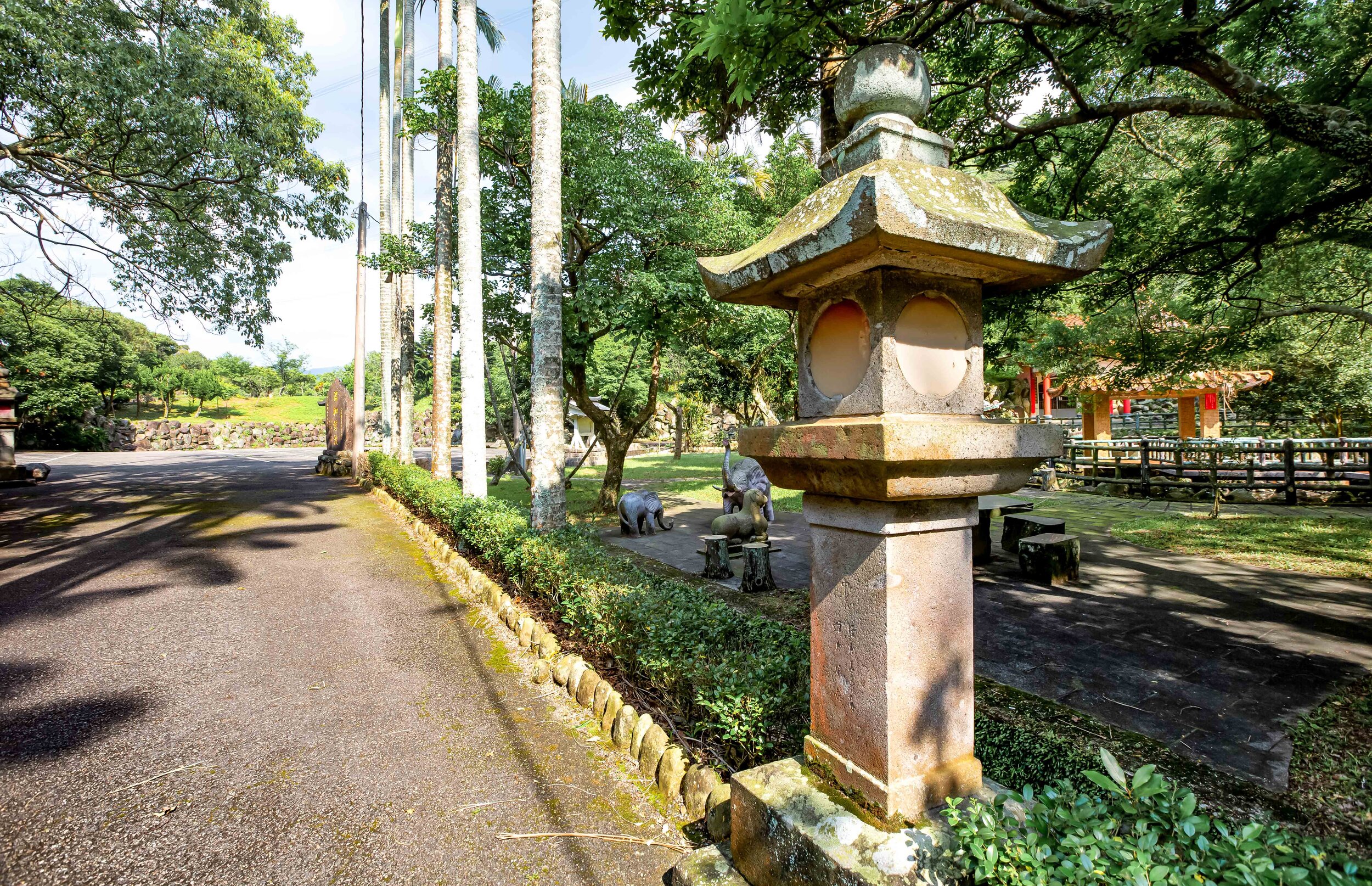As one of the most popular tourist countries in South East Asia, Thailand has a little something for everyone.
From beautiful islands and beaches to thick jungles, historic kingdoms, golden palaces, temples, ancient ruins and one of the most amazing cuisines and friendliest peoples you’ll find anywhere on the planet.
No matter what part of the country you’re visiting, you’ll always be warmly welcomed and fed like royalty.
That being said, the love I have for Thailand is something that grew on me over several visits to the country.
Suffice to say, it wasn’t love at first sight.
This was because my first visit probably wasn’t the most positive in terms of travel experiences.
I was a novice traveler and the purpose of my visit was to conduct research for my thesis, which was a heavy topic that dealt with the issue of sex tourism.
Walking around Bangkok, I remember being approached on several occasions by scam artists attempting to cheat me or send me off on some wild Tuk-tuk adventure - a couple of which I fell for.
Obviously I can’t blame anyone for my own lack of travel experience, but its important to remember that no matter where you go as a tourist, you’re likely to be targeted for scams, so its best not to engage with too many random overly-helpful people on the street.
I do however feel like I owe Thailand an immense debt of gratitude for this experience as it helped me grow as a traveller and also prepared me for the onslaught of scams that tourists are targeted with when visiting Rome and other popular tourist destinations in Europe.
One of the things I’ve discovered over my years of traveling is that the further you travel outside of a country’s capital city, the more fun you’re going to have - This is especially true in the case in Thailand where I think the further you travel away from Bangkok, the more your experience is going to improve.
While most tourists are likely to travel south of the capital to one of the many tropical island paradises that Thailand is blessed with, the northern city of Chiang Mai is another popular destination on the tourist radar.
When visiting Chiang Mai, you’d be forgiven for feeling like you were hanging out in a beach resort on some remote island - The pace of life in northern Thailand’s most populous city is drastically different than the rest of the country, which is part of its charm.
The city is full of historic things to see and do but it is also filled with hipster coffee shops, bars and restaurants where you can relax the days (and nights) away just like you were on a beach.
An absolute delight to visit, if you’re looking to relax, eat some great food, drink some great coffee, enjoy the nightlife and check out some historic sites, Chiang Mai should be high on your list of places to visit.
Founded in 1292 as the capital of the Lanna Thai Kingdom, the historic city is a stark contrast to some of Thailand’s other densely populated areas thanks to an orderly urban design that has since developed outward from the ancient walled city to a modern one with wide streets and smooth traffic.
Chiang Mai might be more than seven centuries old, but it is also a modern city that has blended history with technology and a mission to keep the area green. The streets are clean and quiet and (especially within the walled area) there are trees growing everywhere.
That being said, for several months of the year, Chiang Mai suffers from deadly air pollution due to the old tradition of post-harvest slashing and burning of fields - something that is actually completely preventable.
Even though there is a much more modern section to Chiang Mai, it goes without saying that the majority of tourists spend most of their time within the walled area of the city as it is where you’ll find the most popular restaurants, coffee shops, bars, night markets - and more importantly around two dozen historic places of worship dating back to the 13th and 14th centuries.
Each of these places of worship, has its own unique historic and cultural significance, but Wat Chedi Luang is probably one of the most important to the city itself as it is home of the “City Pillar” housed within the temple.
Oh, and I guess its also because Wat Chedi Luang is also home to Chang Mai’s largest Chedi (pagoda) which dates back to sometime between 1385 and 1402 and after so many centuries continues to define the city’s skyline.
Wat Chedi Luang (วัดเจดีย์หลวงวรวิหาร)
Wat Chedi Luang, otherwise known as ‘The Temple of the Big Stupa’ or the ‘Temple of the Royal Stupa’ is the literal ‘centre’ of Chiang Mai and has served as one of the city’s most iconic images and places of worship for the past seven centuries.
Most people think that Wat Chedi Luang is simply just a giant stupa, but within its walls you’ll find several temples and shrines as well as a Buddhist University.
As one of Chiang Mai’s most popular tourist attractions, you can be sure that you’ll always be able to find visitors from all over the world but at the same time, it is one of Chiang Mai’s most important places of worship, so you’ll also find locals going about their daily lives as well as monks and nuns doing their thing.
In truth, Wat Chedi Luang has been a constant fixture of life in Chiang Mai since the 14th Century, but if you want a clearer picture of its history, it is important to remember that not all of the individual pieces within the complex are several centuries old and that it is a place of worship that has constantly grown over the years.
That being said, even though you’ll find some relatively recent additions to the temple complex, you’re also going to come across some things that look new but are actually several centuries old.
Suffice to say, it’s important to pay close attention to what you’re looking at.
Below I’ll introduce each of the important sections of the temple, a bit about its history and what you’ll find inside so that you have a better understanding of what you’ll see.
The Grand Chedi
The oldest section and the main attraction of the temple is massive “chedi”, which has dominated the Chiang Mai skyline since its construction first began in 1391.
The construction of the chedi took place in several stages and took almost a century to complete.
You might be wondering what a “Chedi” (เจดีย์) actually is, so before I go on I’ll take a minute to explain - A chedi is simply the Thai version of a Buddhist “stūpa”, which is a hemispherical structure that most often contains relics or the remains of monks, nuns or people of notoriety.
Traditionally they are shaped to resemble the Buddha sitting in a meditation posture, with the largest part of the base acting as the throne while the spire at the top symbolizes his crown.
Chedi’s and Stupas can be found throughout Thailand and other parts of Asia, but unless they contain the remains of the Buddha (such as the Boudhanath Stupa in Nepal), they are rarely ever as large as the Chedi at this temple
Link: Stupa (Wiki)
Construction of the Chedi started in 1391 under the direction of Lanna King Saenmueangma, the seventh monarch of the Mangrai dynasty.
As mentioned above, one of the purposes of a chedi is to contain the remains of someone of notoriety.
In this case, the purpose of the chedi was to be the resting place for the remains of the kings father.
Unfortunately in 1401, the king passed away and the chedi was left unfinished.
Construction would later pickup again under the guidance of the king’s widow and for the next few decades construction would continue until it was completed in 1475 during the reign of King Tilokkarat.
When the Chedi was completed, it stood 82 meters high and had a base diameter of 54 meters which officially made it the largest building in the Lanna Kingdom.
In terms of decoration, each of the four sides of the chedi has a large staircase guarded by mythical Naga creatures (which you’ll commonly see in front of temples and shrines) with a niche at the top of each of the staircases where images of the Buddha are enshrined.
Just below the top of the stairs you’ll find a large platform that contains Sinhalese-style stone elephants.
In 1468, King Tilokkarat placed the famed Phra Kaew Morakot (พระพุทธมหามณีรัตนปฏิมากร), otherwise known as the “Emerald Buddha” in the eastern niche of the chedi.
The 66 cm x 48 cm emerald-green statue (made of the semi-precious green stone jasper) is thought to date back to the 15th Century and is considered to be of Lanna origin - although there is quite a bit of intrigue surrounding its origin.
While the origins of the statue might be disputed, its history however has been extremely interesting.
Link: The Emerald Buddha (Wiki)
In 1545, a massive earthquake rocked Chiang Mai and the upper 30 meters of the chedi collapsed leaving it without its spire as well as destroying a few of the stone elephants and the guardians at its base.
It also left the tower with considerable structural issues.
The situation at the chedi after the earthquake was nothing short of disastrous, so it was decided that the precious Emerald Buddha would be moved to nearby Wat Phra Singh, where it would stay for the next decade before becoming a political prisoner and taken to Luang Prabang, the capital of the Lao Kingdom.
There it stayed for the next two centuries at Haw Phra Kaew.
Then in 1779, Siamese General Chao Phraya Chakri captured Luang Prabang and took the Emerald Buddha back to Siam where it was installed in Thonburi. He then seized the throne for himself and founded the Chakri Dynasty where he would be titled King Rama I.
For reference, the current king of Thailand is Maha Vajiralongkorn, officially known as Rama X.
King Rama I later shifted the capital of his kingdom across the river from Thornburi to Bangkok and constructed the Grand Palace as well as Wat Phra Kaew, the temple where the Emerald Buddha has been enthroned for the past two centuries and where it can be seen today.
Historic Photo Link: Wat Chedi Luang, the Big Stupa (Travel & History)
Since the earthquake in 1545 there have been several attempts to reconstruct and restore the chedi.
Most notably in the 1990s, parts of it were reconstructed thanks to the financial backing of UNESCO and the Japanese government, which helped to stabilize the structure.
The project however was controversial in Chiang Mai as it was noted that some of the new additions reflected a style used in Central Thailand and weren’t of Lanna origin.
Back to the Emerald Buddha, you might think that in an attempt to ‘right the wrongs of history’ that the Buddha should be returned to its rightful home at Chedi Luang - This however is a bit of an issue as the statue is considered to be the most revered image of the Buddha in the country, part of the ‘sacred palladium’ of Thailand and is housed in the ‘most sacred’ temple in the country.
A national treasure of this kind isn’t just simply removed and left out in the open in a chedi, where it could be easily stolen or destroyed.
So, in its place today is a (not exact) replica of the statue made of black jade named “Phra Phut Chaloem Sirirat“ or “Phra Yok”, which was gifted to the chedi on the occasion of its 600th anniversary, which just so happened to also be the 700th anniversary of the founding of Chiang Mai and the 50th anniversary of the (former) King’s accession to the throne.
Today the Chedi remains in its partially ruined state with no plans to replace the top thirty meters that fell during the earthquake, which probably makes sense as its not really known what the top of the spire actually looked like.
Sao Inthakin (The City Shrine)
Near the main entrance to Wat Chedi Luang you’ll find Sao Inthakin, known as the ‘Chiang Mai City Shrine’ or the ‘Shrine of the City Pillar’, which is believed to house the city spirit deity.
City Pillars or “Lak Mueang” (หลักเมือง) are found in most of Thailand’s major cities and towns and is part of an ancient tradition that requires a ‘pillar’ be driven into the ground in the historical centre of the city in order to act as a spiritual guardian for the people living there.
The City Spirit Deity, “Chao Pho Lak Mueang” (เจ้าพ่อหลักเมือง) is a tutelary deity that acts as a guardian or protector of a specific geographic location. This type of shrine is common throughout Asia with the practice being important in Hinduism as well as Chinese Folk Religion.
While geographic locations (such as cities) are home to large versions of these shrines, individual homes in Thailand will also most often have miniature versions of these shrines known as Chao Thi (เจ้าที่) or Phra Phum (พระภูมิ), which house the deity.
Link: Lak Mueang (Wiki)
In Chiang Mai, the City Pillar Shrine was originally placed within the nearby Wat Inthakin (Wat Sadeu Muang) in 1296, but was subsequently relocated to its current location within Wat Chedi Luang in 1800 by King Chao Kawila.
The King, who had just retaken the city from the Burmese had the new shrine constructed for the pillar as its original home had decayed during the Burmese occupation of the city.
Outside of the current City Pillar shrine you’ll find three giant dipterocarp trees, which were planted by the king when the shrine was consecrated.
According to local tradition it is believed that if any of the trees suddenly falls, so too will the city.
The interior of the shrine is probably one of the most beautiful in the whole of Chiang Mai as the colours on the wall-to-wall murals of the Buddha’s life are extremely vibrant with a beautiful shrine housing a golden standing Buddha placed above the pillar which has been driven into the ground below.
In front of the shrine you’ll find a notice that reads: “Chiang Mai’s City Pillar is located in Wat Chedi Luang and is now enshrined underground. It is a sacred place that is worshipped by Thai people, especially those from Chiang Mai. It is the pillar of the city. Women are prohibited to enter because they menstruate. It is believed that it humiliates and ruins the sanctity of the city pillar. Besides, men who dress inappropriately are not allowed to walk in. It is believed that any disobeying of the rules will cause social instability.”
So yeah, women aren’t allowed in because they menstruate.
I’m not a big fan of gender restrictions like this, but I’ll leave it at that..
Phra Viharn Luang
The primary area of worship at Wat Chedi Luang, the “Phra Viharn Luang” is a large and beautifully constructed temple that sits directly in front of the chedi.
Phra Viharn Luang dates back to 1412, its construction taking place in conjunction with the work being done on the chedi. It would be quite impressive if the building were six centuries old, unfortunately the wat has been reconstructed several times over its long history with the current version dating back to 1929.
Still, almost a century old, the building is impressive and its beautiful facade and triple-tiered roof is the first thing you’ll notice when you enter the main gates.
Starting with the roof, you’re going to want to pay attention to the small details - Similar to the design of most of Thailand’s wats, its triple-tiered. This one however has overlapping layers that makes the three-tiers actually look like six.
In Thailand, buildings that have intricate roofs like this are considered to be prestigious, so as one of Chiang Mai’s most important places of worship, it should be fairly obvious that there is a lot of detail to this one.
Keeping with tradition, on each end of the gables you’ll find images of mythical nagas while each of the apexes is home to a “chofa”, a representation of the Hindu bird-god Garuda.
Finally, at the top centre of the roof you’ll find a gilt umbrella.
Link: Thai Religious Architecture: Concepts, Temples, Symbols and Parts of Temples
The entrance to the temple is guarded by two impressive-looking nagas, which lead up a set of stairs where you’ll be met with the front door to the assembly hall.
The interior of the hall is relatively plain except for the massive golden columns that are constructed parallel to each other and act as a pathway to the main altar, which can be easily seen from the front door thanks to the massive size of the interior.
The walls are white and there are large windows on the left and right side of the building that allow an ample amount of natural light into the room.
There are also a couple of beautiful chandeliers hanging from the ceiling to provide more light.
In terms of decoration, you’ll want to pay attention to the murals on the columns as well as those on the window shutters that depict certain scenes of the Buddha’s life.
Likewise on the left side of the hall you’ll find some colourful lucky charms hanging and fluttering around in the wind.
Although I mentioned above that the current building only dates back to 1929, the shrine inside is considerably older with the golden image of “Phra Chao Attarot” (Eighteen-cubit Buddha), a bronze standing Buddha that dates back to the 14th Century.
Considered to be one of the most beautiful images of the Buddha from the Lanna Kingdom, the nine meter tall statue looks peaceful and has its hand extended in a motion that westerners might assume that he’s saying: “Stop!”, but is actually is a common Buddhist gesture, known as a “mudra”, for giving reassurance, fearlessness and a sense of safety.
Link: Abhayamudra (Wiki)
On either side of the Buddha you’ll find two of his most important disciples, Moggallana and Sariputra as well as various smaller bronze statues of the Buddha below, all of which date back to around the 14th century.
To the left of the main shrine, you’ll find a shrine set up for the King and Queen of Thailand and along the walls on the right side you’ll find seven bronze statues of the Buddha in various positions with a day of the week in front with a box for offerings.
The reason for this is that in Thailand, the day of the week you were born on is considered to be your “Lucky Day” and similar to the Chinese Zodiac, it determines what kind of person you are, what colors are suitable for you and the people who are best fit to be friends or lovers.
This is something that you’ll find in almost every temple in Thailand, so I recommend searching your date of birth on Google to find out what day your were born on and checking out the Buddha that represents you!
Bhuridatto and Chaturmuk-Burapachaan Viharns
To the rear of the temple complex, on the opposite side of the Chedi from Viharn Luang, you’ll find two smaller Viharns that were constructed to house numerous relics (and the remains) of important monks and abbots throughout Chedi Luang’s long history.
The Lanna-style Bhuridatto Viharn, which is noticeably black, grey and white was constructed in 1858 and is beautifully decorated with a three-tiered roof and an intricately designed front facade that has two beautiful Naga guardians at the door.
Surprisingly, compared to the beautiful exterior, the interior is rather simple and consists of a wide-open space for worshippers and a shrine at the back that consists of a lifelike statue of “Luangpu”, a much loved monk with a golden mondop (tower shrine), that has an urn containing a tooth relic of the monk.
Next door you’ll find the Chaturmuk-Burapachaan Viharn, which is said to have been constructed using the traditional architectural design of the neighbouring Lampang province. The Viharn likewise has an impressive tiered roof and an open-air style that allows natural light and a breeze to flow through it.
The Viharn has a beautiful front pavilion that leads up to the shrine, which is actually quite small. The interior is made of teak and consists only of wax statues of other former monks of which there are quite a few.
Something you’ll have to get used to while visiting places of worship in Thailand are these somewhat eerie lifelike wax statues of monks, which amazingly look like real people.
The Reclining Buddha Pavilion
Near the rear of the complex, next to the two smaller Viharns mentioned above you’ll find a more recent addition, the Reclining Buddha Pavilion.
The pavilion, which was constructed in 1955 by the residing abbot at the time is home to an almost nine meter long ‘Reclining Buddha’ (ปางไสยาสน์), which was crafted during the reign of King Muang Kaeo, who ruled the Lanna Kingdom from 1487 to 1517.
That makes the statue around five centuries old.
The image of the ‘Reclining Buddha’ is a popular one in Buddhist iconography and especially in Thailand.
You might think it simply looks like an image of the Buddha hanging out and relaxing, but it actually represents the final moments of his life on earth. Unlike most people nearing death, the Reclining Buddha is always depicted with a blissful look on his face because he was preparing to enter parnirvana.
Just outside of the Reclining Buddha room you’ll find an image of “Phra Kātyāyana”, an overweight Buddha who is often confused with the “Laughing Buddha”, but is actually one of the ten principle disciples of the Buddha.
Note: For a lot of westerners, the plump “Laughing Buddha”, who is known as Budai / Hotei (布袋) in East Asian Buddhist tradition is often confused with the “Buddha”, who was himself sickly thin. Originally a monk who lived in 10th Century China, he is said to have lived an eccentric lifestyle and had a humorous and captivating personality.
In Thai folklore there is a story that explains that the Buddha’s disciple Kātyāyana was so attractive that both men and women were hypnotized by his beauty. A man on a mission to spread the Buddha’s message, he decided that in order to complete his task, it was necessary to transform himself into an overweight figure so that people would pay more attention to what he had to say and not how he looked.
Phra Kātyāyana was renowned for his ability to explain even the most sophisticated of Buddhist concepts in an easy to understand manner so that the dharma could be accessible to anyone who wanted to learn.
Getting There
Address: 103 Prapokkloa Rd, Tambon Si Phum, Mueang Chiang Mai District, Chiang Mai 50200, Thailand
Wat Chedi Luang is a huge temple complex and pretty much takes up an entire city block within the old walled section of the city. The official address is provided above, but it’s important to note that for tourists there is only one entrance, which is situated along Prapokkloa Road.
Considering that Wat Chedi Luang is home to the City Pillar Shrine, it is located pretty much in the dead-centre of the city, so depending on where you are staying, you should be able to walk there from anywhere within the walled city.
Nevertheless, it gets quite hot in Chiang Mai, so you could easily grab a taxi, tuk tuk or songthaew if you don’t have a bicycle or have rented a motorcycle.
Link: 13 Ways of Getting Around Chiang Mai (Chiang Mai Traveller)
While in Thailand, you should also download the “Grab” app for your phone, which is basically South East Asia’s version of Uber. You can easily grab a taxi, tuk tuk or motorcycle during your travels without having to worry about confusion or being taken for a ride.
Likewise, Thailand also uses Uber, so you have quite a few options available for getting around.
Personally, I preferred to walk. Chiang Mai is a beautiful town and is quite accessible by foot.
Let’s face it, if you’re visiting Chiang Mai, you’re obviously going to visit Wat Chedi Luang.
As one of Chiang Mai’s most popular tourist destinations within the old section of the city, its one of those places that every tourist absolutely has to visit while in town.
Even though checking out the temple could take a couple of hours out of your day, you won’t want to miss the chance to visit this historic place of worship.
Wat Chedi Luang has a lot more going on than your average Thai temple - and you’ll learn so much about the history of Chiang Mai in the process.
Unfortunately, even though there is a pretty good amount of information about each part of the temple provided on-site, there isn’t really a whole lot in terms of in-depth descriptions to better help you understand what you’re seeing while you’re there.
I hope this article helps out a little if you’re planning a trip to the city.
Gallery / Flickr (High Res Photos)








